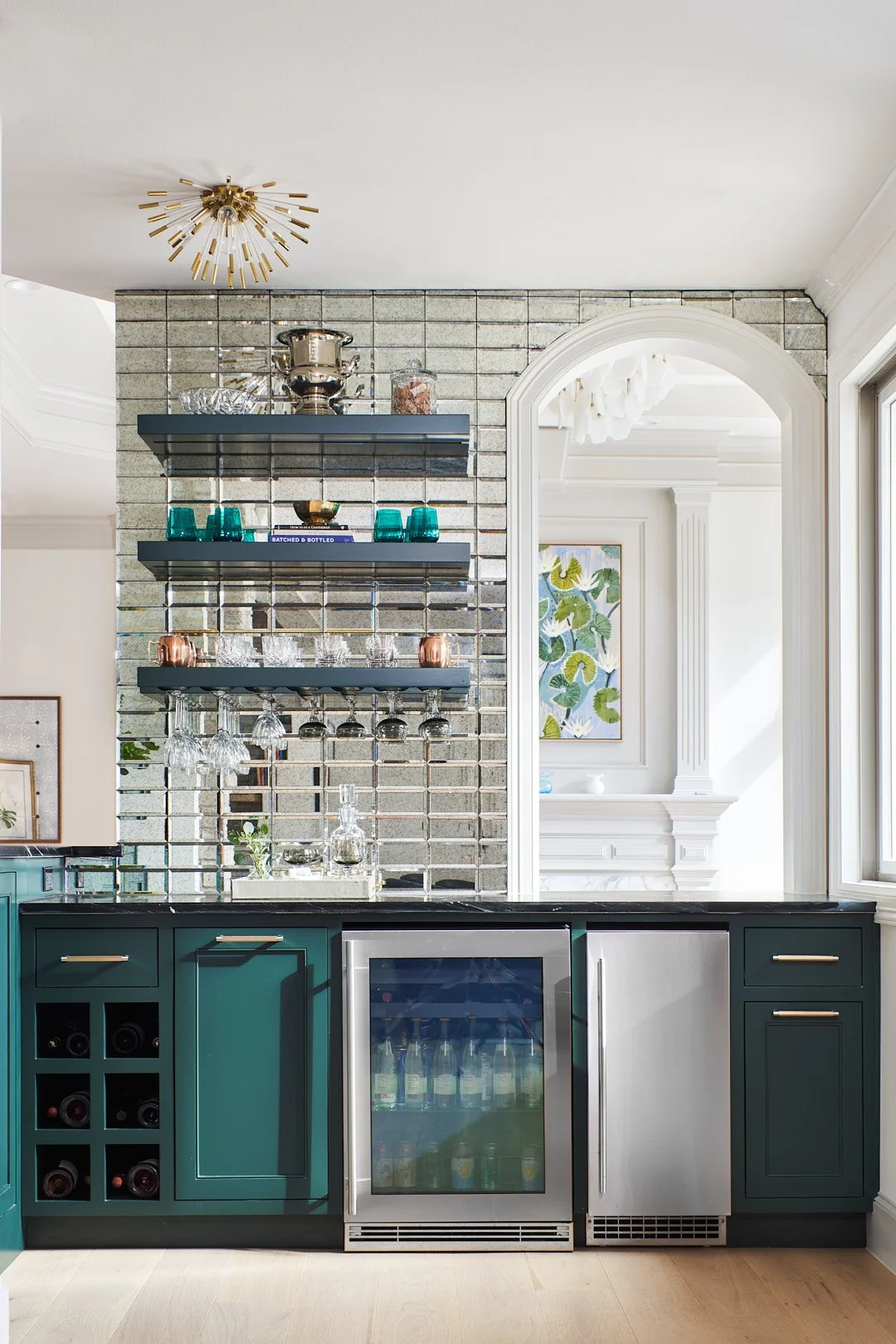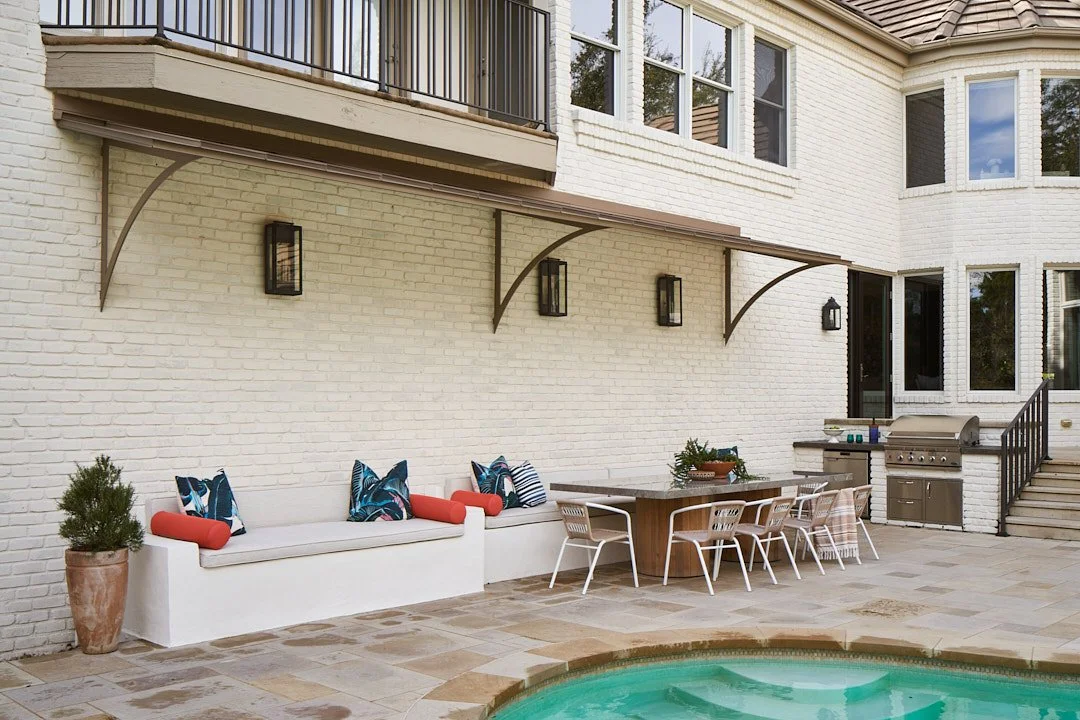12 Different Types of Tile (And the Right One for Your Home)
Our Austin Architects Review 12 Types of Tile and How to Choose the Right Tile for Your Home
Deciding how to choose the right tile for your home can be a daunting task. In addition to shape, color, and price, you must consider material type, application, and maintenance. The best place to start is learning what’s available. To help familiarize you with the different options out there, our Austin architects put together our Tile Selection Guide. In this guide, we review 12 types of tile, their applications, and their maintenance requirements to help you decide which is right for your space. We also share our top four tips to help narrow down your selections at the end!
The Architect's Tile Selection Guide
Our Tile Selection Guide reviews 12 of the most popular types of tile for flooring, backsplash, bathroom, and outdoor applications. Use this guide to familiarize yourself with the options and streamline decision-making during your new construction or renovation project.
12 Different Types of Tile
1. Ceramic Tile
Ceramic tile is molded from clay, pressed, dried, kiln-fired, and glazed to create a durable and versatile material that can be used for floors, backsplashes, and wet areas. It’s one of the most common tiles used in residential architecture because of its versatility and style options. Ceramic tiles range from classic uniform subway tiles to textural, handmade zellige tiles. Thanks to their glazed surfaces, they’re easy to clean and don’t require any special maintenance.
2. Porcelain Tile
Porcelain tile is a type of ceramic tile made from clay, silica, and feldspar. It’s fired at a much higher kiln temperature to produce an extremely durable, hard, and non-porous finished product that is perfect for wet and high-traffic applications. Because porcelain is non-porous, it’s one of the easiest tile types to maintain because it's highly resistant to stains, chips, and wear. Porcelain tile comes in many styles, including options that mimic natural stone and wood.
3. Cement Tile
Cement tile is made from a mixture of cement, sand, water, and color pigments poured into molds. The molds are put under high pressure and left to cure, creating a very strong and durable product. Cement tiles are available in trendy colorful patterns that make a bold design impact. While they’re durable, they are porous. So they require special cleaners and occasional sealing. Because the color pigment runs through the tile, cement tiles can be sanded and refinished. Most cement tiles are approved for indoor and outdoor applications thanks to their non-slip texture.
4. Terracotta Tile
Terracotta tile is a type of unglazed ceramic tile made from fired clay. While terracotta red is the most notable color, white and brown clay variations are also popular. These tiles typically have a rustic, handmade finish, and no two tiles look exactly alike. They can be used in a variety of styles but have deep ties to Spanish Mission architecture. Installation may require an initial dry lay to evenly distribute the color variations and larger grout lines to account for size variations. Terracotta is a durable material often approved for indoor and outdoor use. However, it is also porous, so it may need to be sealed when installed in wet areas.
5. Natural Stone Tile
Almost any quarried natural stone can be cut into tiles. Most natural stone tiles share the same qualities, including natural variations, durability, and porous surfaces. Depending on the finish's shine, natural stone tiles may also be susceptible to scratches. Maintenance requires dust mopping, non-abrasive cleaners, and occasional resealing.
6. Marble Tile
Marble tile is cut from larger marble blocks. Marble is a high-grade metamorphic rock created from intense pressure, making it one of the most durable stones available. The material is known for its beautiful natural veining and luxurious feel. It’s an excellent option for flooring, backsplashes, and bathrooms.
7. Slate Tile
Slate tile is made from metamorphic rock formed from compressed shale or mudstone. It’s a hard, durable material known for its darker charcoal tones accented with shades of rust and emerald. Slate tile has an earthy feel, making it a great option for rustic-style homes.
8. Limestone Tile
Limestone is a popular exterior cladding material here in Texas, but it can also be cut into tiles for indoor and outdoor use. Limestone is a sedimentary rock formed from calcium carbonate, and it often contains fragments of fossils that can add visual interest and character. White limestone is popular in Texas, but brown and charcoal are also available.
9. Travertine Tile
Travertine tile is a type of limestone formed from calcium deposits in hot springs. Travertine is known for its soft beige palettes, porous surface, and light veining. These tiles often have small dimples on the surface so it’s important to seal them. Travertine can be used in many different styles but usually takes on a warm Mediterranean look.
10. Glass Tile
Glass tile is made from colored glass. These tiles are easy to clean thanks to their nonporous surface, but they can easily chip on the edges in high-traffic areas. Typically, glass tiles are best used for small decorative applications, like kitchen backsplashes and bathroom shower nooks. Glass tiles are available in a wide range of colors, styles, and mosaic patterns.
11. Metal Tile
Metal tile can be made from brass, copper, aluminum, or stainless steel and finished in a shiny polish, brushed, or rustic hammered texture. Metal tiles make a big design impact, so they are best used as accents to break up larger tile lays or backsplashes. In some cases, other types of tiles, like cement tiles, will have a metal accent piece embedded in the surface. For this material, a little goes a long way in your design.
12. Hand-painted Tile
Hand-painted tiles are ceramic, porcelain, or glass tiles decorated by hand. These tiles are gaining popularity for their unique look and personalization opportunities. Hand-painted tiles are best used as accents, as tiling an entire room in them could significantly impact your overall budget and timeline. Think of hand-painted tiles as beautiful works of art built right into your home!
How to Choose the Right Tile for Your Home
When choosing the right tile for your home, you’ll probably select more than one! Different tiles suit different applications. For example, you might choose durable porcelain for your kitchen floor tile and contrast it with a shiny glass tile backsplash that’s easy to wipe clean. Don’t feel limited to one choice. Here are the top four things to remember when making your selections.
Application
First, consider how you are using the tile. Glass and metal tile accents work well for backsplashes or small decorative accents, while ceramic or natural stone is more practical for flooring and larger areas.
Indoor vs. Outdoor Use
Don’t assume you can use the same tile in your living room on your outdoor patio. Tiles are either approved for indoor or outdoor use or, in some cases, both. Approvals have to do with thermal properties, expansion, and surface texture. Generally, cement and terracotta tiles are suitable for outdoor applications, while slick porcelains and marbles are better suited for indoor use. Always check and verify with the manufacturer.
Architectural Style
Certain tiles pair well with specific architectural styles. When making your selections, choose a tile that coordinates with the overall look of your home. Terracotta has a Mediterranean or Spanish feel, whereas large-format marble tiles look more contemporary.
Maintenance
We touched on the fact that different types of tile require different maintenance levels. Ceramics and porcelains or generally maintenance-free, besides regular mopping. However, due to their porous surfaces many cement, natural stone, and terracotta tiles require occasional sealing and special cleaners. Always verify proper maintenance with the manufacturer and decide if it’s a practice you want to incorporate into your routine.



